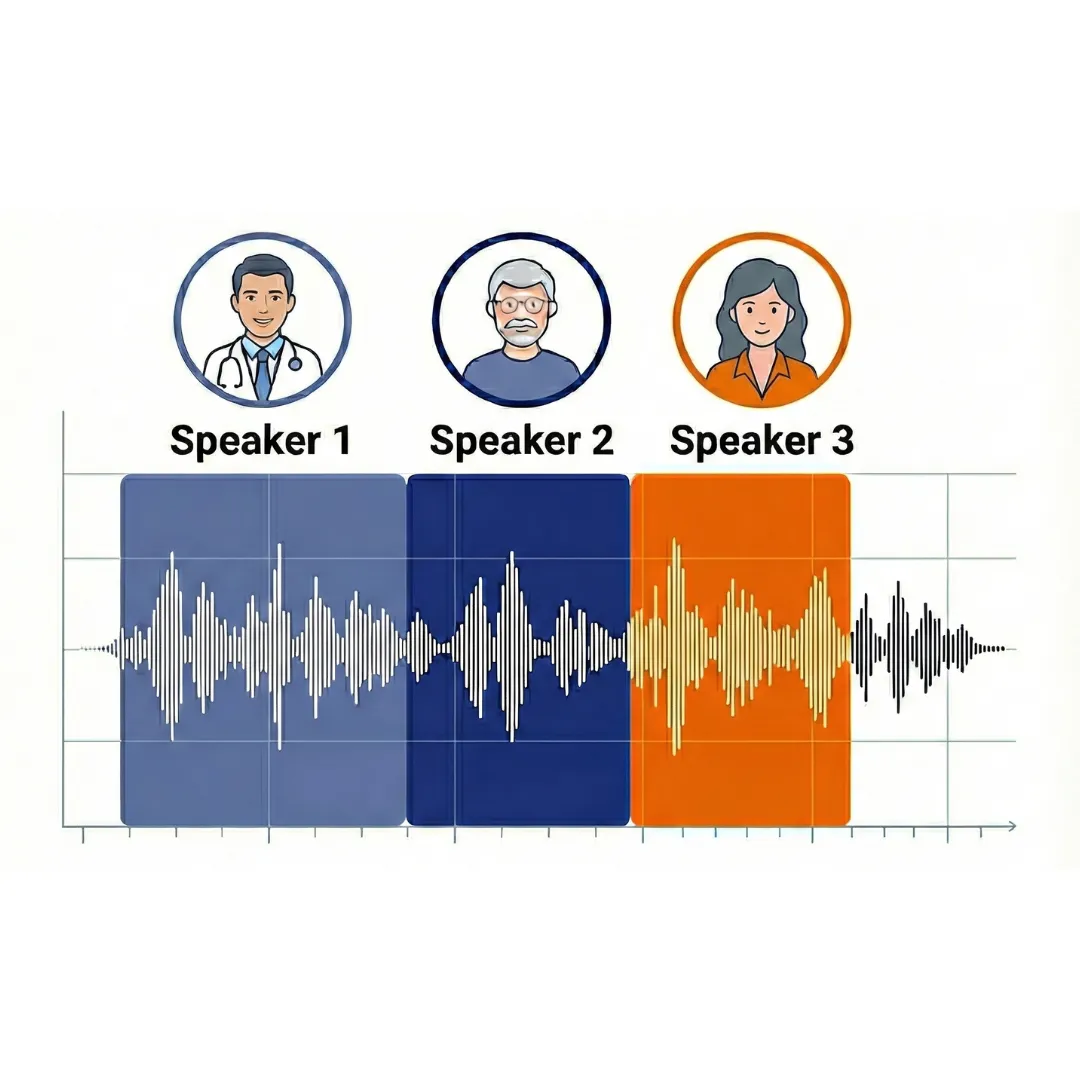BastionGPT is a powerful AI Assistant and AI Scribe solution for improving the speed and quality of clinical documentation, report writing, care planning, patient education, billing compliance, quality reporting, and more. This guide outlines best practices for crafting effective prompts that optimize the utility of AI models like BastionGPT while maximizing medical accuracy and structure, leveraging prompt engineering to enhance outcomes for medical professionals.
Establishing Professional Context
The foundation of any medical prompt begins with establishing the appropriate clinical context and expertise level.
Define the healthcare professional role explicitly
- Example: "You are a pediatric neurologist evaluating a complex case of childhood epilepsy"
- Example: "Act as a healthcare navigator, helping patients understand their insurance options"
Specify the level of expertise and target audience
- Clinical specialists
- Allied health professionals
- Patients and caregivers
- Administrative staff
Structuring Your Prompt
Clear structure ensures consistent and reliable outputs while maintaining healthcare standards, a principle rooted in prompt engineering.
Begin with a clear objective statement
- Example: "Create a patient education handout explaining the basics of type 2 diabetes management"
- Example: "Analyze these lab results and provide clinical interpretation with recommended follow-up"
Use standardized placeholders for variable information
- Patient demographics: <PatientAge>, <PatientGender>
- Clinical data: <LabResults>, <VitalSigns>
- Missing information: <Unknown>, <PendingResults>
Specify desired format and components
- SOAP note structure
- Bullet-point summary
- Decision tree format
- Table format for medication lists
Setting Parameters and Requirements
Specify language and comprehension level
- "Write at an 8th-grade reading level for patient instructions"
- "Use technical medical terminology appropriate for specialist consultation"
- "Include both generic and brand names for medications"
Define content boundaries
- "Focus only on FDA-approved treatments"
- "Include contraindications and warning signs"
- "Exclude experimental procedures"
Clinical Context and Medical Accuracy
Provide relevant clinical information
- Patient history elements
- Current symptoms and findings
- Relevant test results
- Treatment history
Emphasize evidence-based practice
- "Include only current clinical guidelines"
- "Reference recent meta-analyses when available"
- "Highlight strength of evidence for recommendations"
Examples in Practice
Poor Prompt Example:
"Write about diabetes treatment"
Better Prompt Example:
"You are an endocrinologist creating a comprehensive treatment plan for a newly diagnosed Type 2 Diabetes patient. Include:
- Initial medication recommendations
- Blood glucose monitoring schedule
- Lifestyle modifications
- Follow-up timeline
- Warning signs requiring immediate attention Write at an 8th-grade reading level, include both English and Spanish translations, and format as a patient-friendly handout with bullet points and clear sections."
Excellent Prompt Example:
"You are a certified diabetes educator preparing materials for a newly diagnosed Type 2 Diabetes patient.
[Use the attached document or copied text to generate the following summary]
The patient is a <PatientAge> year-old <PatientGender> with <Comorbidities>. Create a personalized management plan that includes:
- Medication Management:
- Current medications: <CurrentMeds>
- Administration schedule
- Side effects to monitor
- Monitoring Protocol:
- Target blood glucose ranges
- Testing schedule
- Recording methods
- Lifestyle Modifications:
- Dietary recommendations
- Exercise guidelines
- Sleep hygiene
Format the content at an 8th-grade reading level, include culturally appropriate dietary examples, and provide clear action steps for emergency situations. Include spaces for personalized goals and monitoring logs."
Quality Assurance Guidelines
Request fact-checking parameters
- "Verify all medication dosages against current guidelines"
- "Cross-reference recommendations with standard of care"
- "Flag any areas requiring physician verification"
Include safety measures
- "Add standard medical disclaimers"
- "Include emergency warning signs"
- "Note when immediate medical attention is required"
Final Tips for Success
- Test and iterate prompts to refine outputs
- Use BastionGPT to save successful prompts for common tasks
- Check out the BastionGPT library of prompts to get you started
- Document any limitations or areas requiring human verification
Remember: AI models are tools to augment, not replace, clinical judgment. Always verify generated content against current medical standards and institutional policies.
Additional examples of effective prompts
Example Set 1: Therapy Session Documentation
Poor Prompt Example: "Write therapy notes for my patient."
Better Prompt Example: "You are a licensed mental health therapist writing a BIRP note for a 45-minute CBT session. Include:
- Client's presentation and affect
- Interventions used today
- Progress toward treatment goals
- Safety assessment
- Plan for next session Write in professional clinical language appropriate for insurance documentation and include standard disclaimers."
Excellent Prompt Example: "You are a licensed mental health therapist documenting a cognitive behavioral therapy session.
[Use the attached document or copied text to generate the following summary]
The client is a <PatientAge> year-old <PatientGender> in session <SessionNumber> for <PresentingProblem>. Create a comprehensive BIRP note that includes:
- Behavioral Observations:
- Mental Status: <MentalStatus>
- Affect/Mood: <Affect>
- Risk Assessment: <RiskFactors>
- Engagement Level: <Engagement>
- Interventions:
- Specific CBT techniques: <Interventions>
- Skills taught/practiced: <Skills>
- Homework reviewed: <HomeworkStatus>
- Resources provided: <Resources>
- Response:
- Progress on treatment goals: <GoalProgress>
- Insight/participation level: <Participation>
- Symptom changes: <SymptomChanges>
- Homework compliance: <Compliance>
- Plan:
- Next session focus: <NextFocus>
- New homework assigned: <NewHomework>
- Referrals needed: <Referrals>
- Follow-up schedule: <FollowUp>
Format the note using current CPT documentation requirements, include appropriate clinical terminology, and add standard confidentiality statements. Flag any safety concerns for immediate supervisor review."
Example Set 2: Patient Chart Summary
Poor Prompt Example: "Summarize this patient's chart"
Better Prompt Example: "You are a medical scribe creating a chart summary for a complex patient with multiple chronic conditions. Include:
- Significant diagnoses
- Current medications
- Recent hospitalizations
- Outstanding tests
- Care team members
- Follow-up appointments Format the summary in a clear, hierarchical structure using standard medical terminology."
Excellent Prompt Example: "You are a clinical documentation specialist preparing a comprehensive chart summary for care team review.
[Use the attached document or copied text to generate the following summary]
The patient is a <PatientAge> year-old <PatientGender> with <PrimaryConditions>. Create a structured summary including:
- Demographics and Background:
- Insurance: <InsuranceType>
- PCP: <PrimaryCareProvider>
- Preferred Language: <Language>
- Advanced Directives: <Directives>
- Active Problems (prioritized):
- Primary Diagnoses: <ActiveDiagnoses>
- Current Status: <ConditionStatus>
- Date of Onset: <OnsetDates>
- Treating Providers: <Providers>
- Medication Profile:
- Current Medications: <CurrentMeds>
- Recent Changes: <MedChanges>
- Allergies/Reactions: <Allergies>
- Pharmacy: <Pharmacy>
- Recent Care Events:
- Hospitalizations: <Hospitalizations>
- ED Visits: <EDVisits>
- Procedures: <Procedures>
- Specialist Consults: <Consults>
- Outstanding Items:
- Pending Tests: <PendingTests>
- Referrals: <OpenReferrals>
- Care Gaps: <CareGaps>
- Due/Overdue Items: <DueItems>
- Care Coordination:
- Team Members: <CareTeam>
- Recent Communications: <Communications>
- Care Conference Notes: <ConferenceNotes>
- Social Support: <SocialSupport>
Format the summary with clear headers, highlight critical information, include relevant dates, and flag any immediate action items. Add ICD-10 codes for active conditions and note any quality measure gaps that need addressing."




.png)
.png)